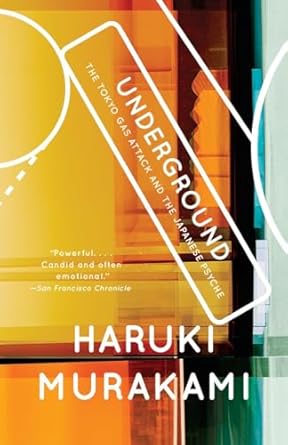Story &ものがたり& die Geschichte
Underground アンダーグラウンド by 무라카미 하루키 본문
" 1995年3月20日、東京の地下鉄に猛毒サリンが撒かれたこの日、日本社会の"日常"は破壊された。村上春樹はこの未曾有の事件を「ただの事件」として風化させることに抗し、被害者・加害者双方へのインタビューを通して編んだ『アンダーグラウンド』および『約束された場所で』において、深層に潜む日本社会の構造的欠落を抉り出した。彼が見出したのは、日本社会の「日常の空虚さ」だった。オウム真理教の信者たちは、奇妙なほど"クセ"がなく、均質的で、与えられた教義に自己を溶かすことに違和感を持たない存在だった。一方で、被害者たちは、つまらない日常をどうにか受け入れ、自分なりの工夫で生き延びようとする存在であり、その生き方には"クセ"と個性が滲み出ていた。村上はこの対比のなかに、戦後日本が築いてきた"日常の制度"の両義性を見ている。日本の"日常"は、戦後、無数の犠牲の上に作られた、つまらない平穏である。だがその下では、問いや葛藤が避けられ、空気と同調の倫理が支配する。村上は、この構造の中で生まれた人々が、自由を恐れ、自分の言葉を持たず、既存の権威に安住する姿を、オウム信者に重ねる。彼らは、自ら考えることを放棄し、与えられた"物語"に従順に従うことで、むしろ安堵していた......." " Haruki Murakami’s Underground: The Tokyo Gas Attack and the Japanese Psyche is not a classic beach read nor a typical Murakami magic realism novel. It is a history of terrorism, mistaken belief and innocents assaulted. It is not a book one can review as enjoyable. This is the first-person accounts of survivors, a few family members and of such of those Murakami could reach who conducted or had direct contact with the perpetrators within the Aum religious sect. Senior members of this known to be dangerous group engaged in a deliberate release of highly poisonous sarin gas on six Tokyo underground subway cars on March 20, 1995. The attacks were coordinated and executed in the early part of Monday morning rush hour. Murakami is not acting as a reporter. He was acting as a writer seeking to understand the attack as it was experienced by those on the scene and to attempt to related this attack to some aspect of modern Japanese psyche. There is minimal editing of each interviewee statement, some indication of how he guided each interview and additional sessions with members of Aum sect....."
이야기가 어둡지만 어렵지는 않은 작품이다. 일본원서가 아니라 영어원서로 읽었는데 문장이나 표현들이 무난하기 때문에 읽는데 큰 어려움이 없는 작품이었다. 실재로 일본에서 발생했던 사이비 종교단체의 무차별 테러를 둘러싼 사람들의 이야기를 잘 보여주는 작품이다.


